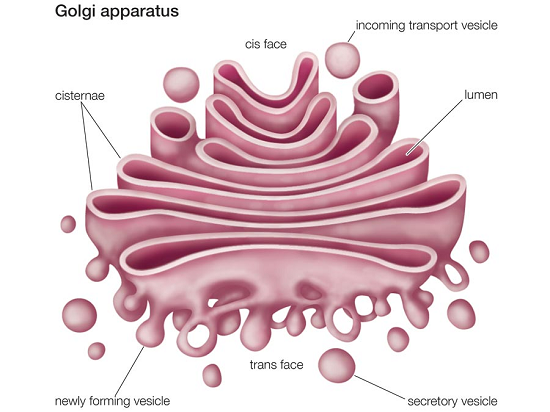Updated By: LatestGKGS Desk
Biology: Golgi Appartus discovery, feature, size, shape, role in nucleaus

Biology: Introduction of Golgi Apparatus, Size, Shape, and its feature
Camilo Golgi (1898) first saw the densely stained reticular structures near the nucleus. He was later given the name of Golgi Bodies. They include many flat, disc-shaped sacs or cisternae of 0.5µm to 1.0µm diameter.
These are parallel to each other. Different types of cisternae are present in Golgi complex. The Golgi cisternae are concentrically arranged near the nucleus with distinct convex cis or the forming face and concave trans or the maturing face. The cis and the trans faces of the organelle are completely different but are connected to each other.
The Golgi apparatus mainly executes the work of packaging materials, to be delivered either to the intra-cellular targets or secreted outside the cell. Materials to be packaged in the form of vesicles from the ER fuse with the cis face of the Golgi apparatus and move towards the maturing face.
It tells you why the Golgi apparatus remains in close association with the endoplasmic reticulum. The Golgi apparatus is the important site of formation of glycolipids and glycoproteins.